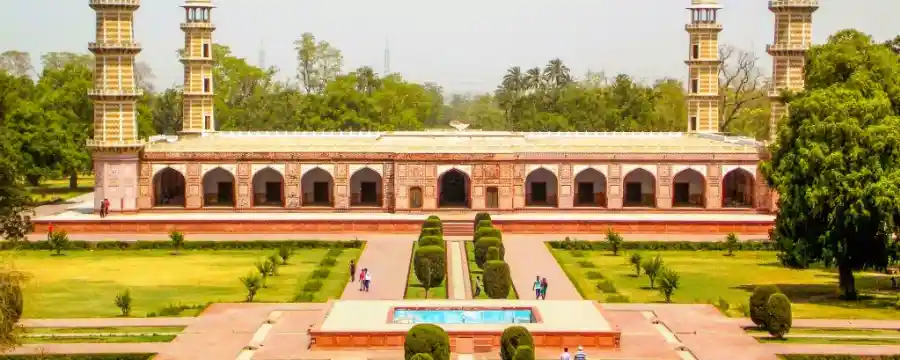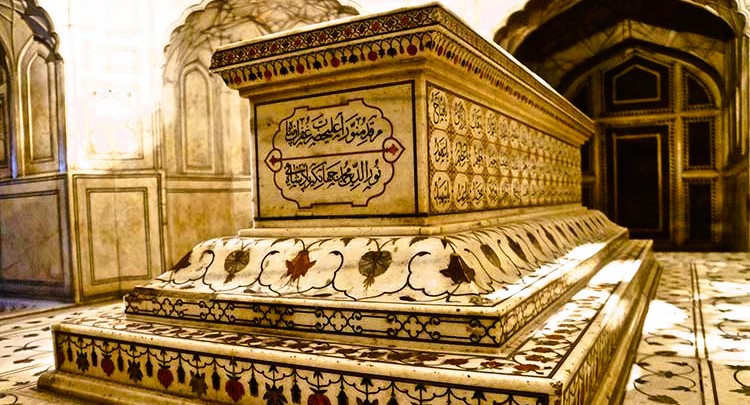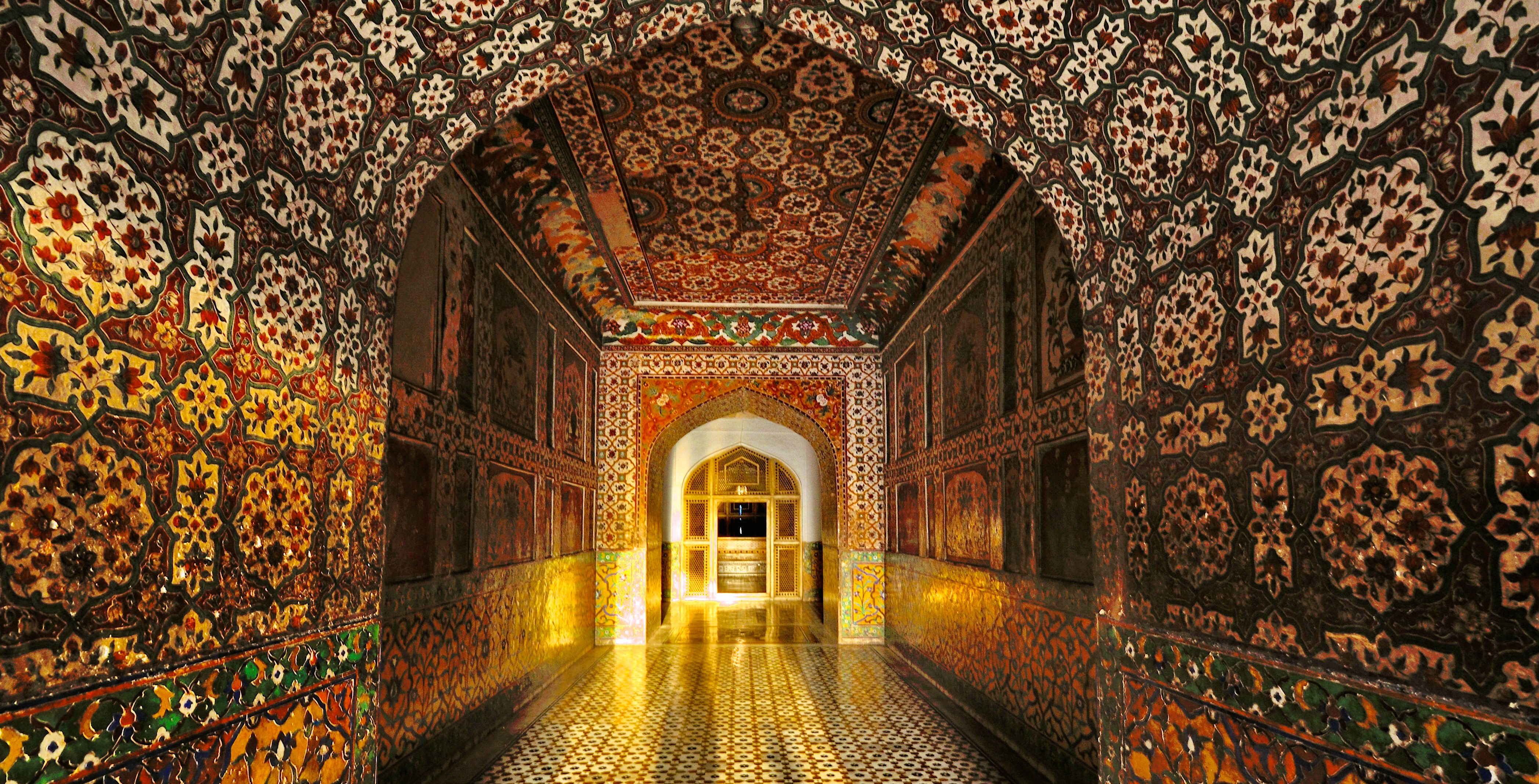Tomb of Jahangir, Lahore - History And More

The Tomb of Jahangir is a magnificent testament to the Mughal Emperor's legacy. Built in 1637 the mausoleum stands today as a beautiful and awe-inspiring reminder of Jahangir's power and stature. Located along the banks of the Ravi River in Shahdara Bagh, Lahore, Pakistan, the Tomb of Jahangir is a stunning reminder of the Mughal Empire's grandeur.
Its exterior is beautifully adorned with pietra dura, and its interiors are lavishly decorated with frescoes and marble. The mausoleum along with the nearby Akbari Sarai and Tomb of Asif Khan has been nominated as a UNESCO World Heritage site, showcasing the grandeur of Mughal art and architecture.
It is a significant tourist destination, and thousands of people visit it daily to learn about its fascinating history.
Tomb of Jahangir History
As he was leaving Lahore for Kashmir, Jahangir died at Rajouri. His remains were returned to Lahore and buried in Shahdara Bagh on the Ravi River’s banks.
Emperor Jahangir was buried in Lahore, Noor Jahan’s historic pleasure garden, known as Dilkusha Garden, as per his last wish. His mausoleum is three miles northwest of the city near Shahdara on Ravi's banks.
Although contemporary court sources credit Shah Jahan with the construction of his father’s tomb 10 years after his death, it is more likely that Noor Jahan’s vision was the driving force behind it. The empress was a big supporter of architecture, having constructed several structures and gardens.
Empress Noor Jahan was deeply devoted to her late husband, Mughal emperor Jahangir, and in 1627 she commissioned the construction of a grand mausoleum for him, based on the Itimad-ud-Daulah tomb in Agra. She became a permanent resident in Lahore, where she had a hand in the design and setting of the monument, Dilkusha Garden. This costly project, which took ten years to complete, cost an estimated Rs. 10 lakhs. The Empress was remembered for her contribution to this majestic mausoleum, which became Jahangir's final resting place.

Architecture of Jahangir's Tomb
The Tomb of Jahangir is a stunning monument located within a beautifully landscaped walled garden. Its four 30-meter tall minarets are decorated with intricate paintings, pietra dura inlay, and colorful marble. The tomb is embellished with luxurious décor, making it a sight to behold.
The Tomb of Jahangir features two large stone and brick entrances on either side facing north and south. These entrances lead to the Akbari Serai, a square courtyard with an impressive view of the garden in front of the mausoleum. The garden is filled with four-bricked canals that branch out from the center, and in the past were adorned with numerous fountains.
The mausoleum’s passageway features exquisite mosaic artistry depicting flowers and Quranic texts. The interior of the mausoleum is filled with grandeur, with a white marble sarcophagus raised in the center and mosaic flowers on its sides, mimicking those found at Agra's Taj Mahal. The ninety-nine attributes of God are inlaid in black on two sides of the tomb, while intricate jalis allow light to enter in a range of patterns. This awe-inspiring beauty makes for an unforgettable experience.

Tomb of Jahangir Design
The Jahangir Tomb is a magnificent example of classic charhar bagh architecture, with an intricate layout consisting of four parallel pathways, sixteen divisions, and alternating octagonal and square talabs at each junction. The grounds cover 55 acres and feature a brick geometric pavement surrounded by small water channels. The northern and southern gates, constructed with red Sikri sandstone and white marble inlay, are impressive and add to the overall grandeur of the structure.
The tomb is an impressive structure, crafted in red sandstone with beautiful marble inlay. It features an 84-meter-square arcaded platform and four corner minarets that rise 100 feet high, decorated with pink and white marble chevrons. The crowning touch is the domed kiosk on top of each minaret.
Four openings on the platform lead down to the octagonal chamber housing the chabutra, a marble cenotaph sitting on a platform with precious stones placed in floral patterns and black calligraphy inscribed with Jahangir's death date and ninety-nine names of ALLAH.
The crypt once had a second floor; a platform erected on top of the massive square one still survives. The remains of a marble screen indicate that it was originally enclosed, and indications indicate the whereabouts of a second cenotaph.

Jahangir's tomb is thought to have been left unroofed, just as Babur's was before him. Located in a connected, rectangular area known as the Akbari Seria and situated to the west of the charbagh tomb garden, the mausoleum also includes a modest mosque on its western side. The Akbari Seria served as the forecourt or chowk-i jilo khana for the tomb, allowing visitors to enter and pay tribute to Jahangir's memory before his death.

Explore Travelpakistani diverse and Best Lahore One Day Trips 2024-25 that can take you to the Tomb of Jahangir and enjoy your time in the Tomb of Jahangir.
Top Selling One-Day Trips of Lahore 2024-25
The tomb of Jahangir is strongly recommended for people engrossed in archaeology and history as this place has a lot to tell. So what are you waiting for? Plan your trip by clicking on the following button and fill the form.
Read also:
Data Darbar - Lahore Pakistan
Lahore Fort (Shahi Qila) - History and More
Minar e Pakistan, Lahore - The Tower of Pakistan
Top 9 Best Things To Do in Lahore Pakistan 2024-25
Lahore Zoo - Activities, Timings, Ticket Price And More
Wagah Border - A Connecting Link between Two-Nation
Wazir Khan Mosque - A Must-Visit Historical Site of Lahore
Badshahi Mosque, Lahore - Iconic Symbol of the Mughal Empire
